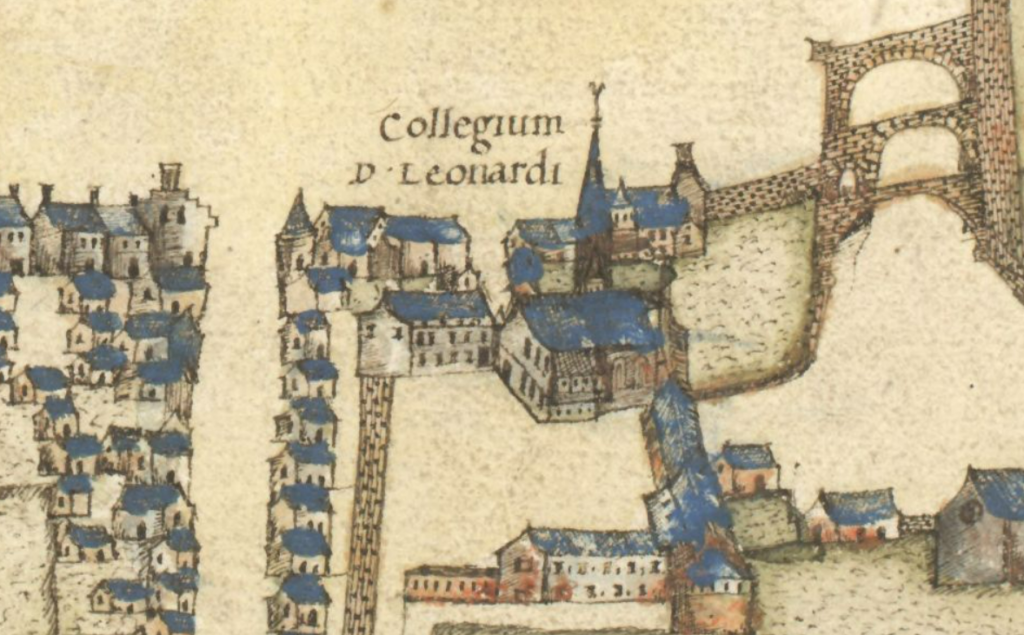The history of St Leonard’s College

St Leonard’s College was founded in 1512 by Archbishop Alexander Stewart and Prior John Hepburn. It was intended for the education of novices of the Augustinian Order – and primarily of the Priory of St Andrews – in Arts and Theology. The newly founded College was administered by the Priory, and its organisation and discipline were of a monastic severity. From the beginning it included other students, and its members studies under the academic supervision of the University of St Andrews.
The College was located at the north-west corner of the Priory precinct. The buildings of the College were arranged around a courtyard and comprised a church, library, common hall, schools, chambers, and lodgings for staff.
In 1544 the college (now known as ”the College of St. Leonard”) acquired a substantial measure of autonomy. Its founded members comprised a Principal, two chaplains, four regents, and a variable number of scholars. The Principal, a Canon of the Priory, gave instruction in Theology, while the regents gave instruction in Arts. The College disassociated itself from the Priory in 1545. The great humanist George Buchanan (1506-82) was Principal of St Leonard’s College from 1566-70.
In 1579 the Colleges of St Leonard and St Salvator (founded 1450) were reconstituted as colleges of arts and philosophy while teaching at St Mary’s College (founded 1538) focused on theology. Declining student numbers and the poverty of the University led to the union of the two arts colleges, in 1747, as the United College of St Salvator and St Leonard.

Despite the fact that the buildings of St Leonard’s College were in better condition, it was the St Salvator’s site that was chosen to be the seat of the new United College. In 1772 the buildings and gardens of St Leonard’s College passed into private hands, with the exception of the St Leonard’s Chapel, which was explicitly excluded from the sale and still remains a part of the University.
St Leonard’s College as a postgraduate centre
From 1747 onwards, St Leonard’s College existed in name alone until discussions began in the early 1970s to revive it as a centre for postgraduates. As early as 1972, The Alumnus Chronicle reported that “[a] service was held in the ancient Chapel of St. Leonard on 3 November [1971] to mark the revival of the College of St. Leonard where a multi-disciplined institute of Postgraduate Studies will be established. […] The University still seeks more Common Room facilities for its graduates as part of this College”.
In October 1974 Professor Douglas Lloyd, the first Provost of St Leonard’s College in modern times, outlined the vision for its reconstitution in the Draft Constitution of St Leonard’s College. He explained how it would enrich the life of the University and cater exclusively for postgraduate students by:
- caring for their wellbeing
- promoting intellectual contact between postgraduates and staff of different disciplines, thereby stimulating interest in the research activities of the University generally
- promoting social contact between postgraduates, thereby creating a sense of belonging to a wider institution in addition to their departmental loyalties.
In November 1974 the University Senate approved the constitution of the revived college. It has been central to the University and its postgraduate community ever since. All postgraduates are automatically enrolled in St Leonard’s College and become part of this vibrant and unique community at St Andrews.
In 2021, St Leonard’s College, and the postgraduate community, acquired a physical home: Old Burgh School on Abbey Walk is a dedicated, modern centre of learning for all postgraduate students. It provides study, teaching and meeting spaces as well as informal areas for socialising and connecting with colleagues.